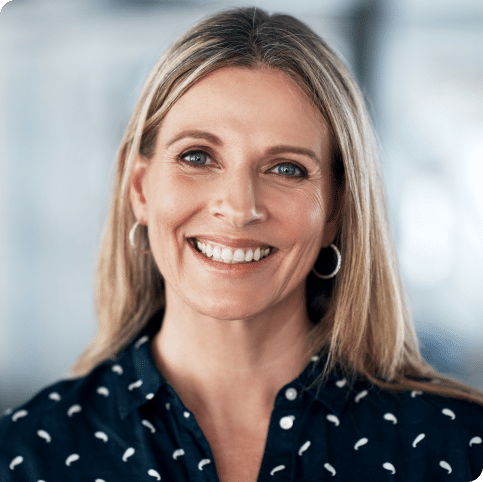How does Trans PRK work?
With this modern Trans PRK eye laser method, the entire procedure is performed without contact and without incisions. The excimer laser removes the upper layer of the cornea (regenerated after the operation) where the refractive error is to be corrected. The excimer laser then precisely removes the underlying corneal stroma to correct the refractive error.
The Trans PRK method does not use an alcohol solution and the surgeon does not have to make an incision with a scalpel. This also means that no “flap” is created, which increases the risk of complications. A “flap” is when the upper cornea is cut and folded back for laser eye surgery.
At Smartlaser we work with the most modern Schwind laser system (Schwind Amaris 1050 RS). The SmartSurf technology enables particularly smooth corneal ablation, which contributes to faster healing, less pain and immediately improved vision.
More about Smartlaser technologyAreas of application and limitations of the Trans PRK method:
The Trans PRK method is very suitable for treating short-sightedness. However, the procedure quickly reaches its limits when it comes to long-sightedness. The regular application area of Trans PRK procedures:
• for myopia: -6 dpt
• for astigmatism: 3 dpt
• for farsightedness: not recommended
All PRK laser eye surgeries have their limitations, and if they are exceeded, other procedures are more suitable:
• for myopia: -6 dpt
• for astigmatism: 3 dpt
• for farsightedness: not recommended
Laser eye surgery using the Trans PRK technique is also particularly suitable for people who practice contact or water sports or belong to certain professional groups (e.g. police).

Benefits of Trans PRK
The Trans PRK method is one of the most advanced methods of laser eye surgery and is used for many forms of visual impairment.
The key advantages at a glance:
• Maximum safety through 7D eye tracking, automatic energy adjustment and exact calculation of the ablation
• Painless, gentle procedure without contact with the eye and without incision
• Short treatment time without typical “flap” risks
• Particularly smooth corneal removal for fast healing and best results


preliminary examination
During the preliminary examination, we will carefully determine which laser eye method is suitable for you. If neither Trans-PRK nor Femto-LASIK is promising, you have the option of having an alternative procedure performed at our parent practice “ EyeLaser Augenlaser Wien ”.
preparation for the operation
Your face will be disinfected, your eyelids will be fixed and you will be given numbing eye drops to ensure a pain-free Trans PRK procedure.
Trans PRK procedure
The Trans PRK method works exclusively with the excimer laser. First, the upper layer of the cornea is removed with pinpoint accuracy so that the area to be corrected is exposed. The laser then corrects your cornea within a few minutes. Finally, a protective lens is inserted.
follow-up checks
The first follow-up check takes place after 3-4 days, during which the protective lens is removed and the healing process is monitored. The final check takes place after approximately 3 months at the Smartlaser Center in Vienna.
How long does the healing process take after the Trans PRK method?
The epithelium (top layer of the cornea) closes automatically within a few hours to days. The smooth, modeled cornea allows for a smooth healing process, although slight pain may occur within the first 2-3 days after the operation.
To support the healing process and relieve your pain, we will insert a protective lens after the operation.
Although your vision will improve significantly immediately after the procedure, it will usually take 2-3 weeks for you to function well. However, it will take 3-4 months for you to fully benefit from your new-found vision.
All costs at a glance